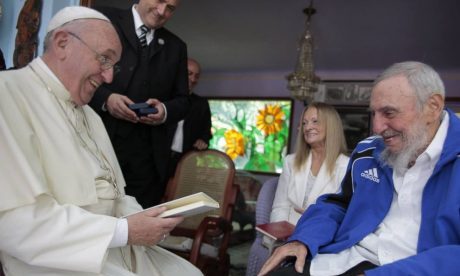The Jesuit-educated Fidel Castro rejected the Church of his childhood following the 1959 Cuban revolution, and for two decades never met a bishop. But then came a book-long interview with a Brazilian friar, and growing closeness between Church and state in Cuba — as well as tantalizing signs that Castro was seeking reconciliation with his Catholic faith.
When the Brazilian friar Frei Betto met Fidel Castro in 1980 in the Nicaraguan capital of Managua, the two had a dense conversation about religious freedom in Cuba that led to a bestselling book that helped pave the way for a church-state rapprochement, and eventually, the visit by Pope John Paul II.
That book laid bare Fidel’s complex relationship with the Catholic faith of his childhood in 1940s Cuba, where as a child he was educated by Spanish Jesuit priests at an elite private school in the island’s southern city, Santiago.
Betto, a liberationist Dominican sympathetic to the Cuban revolution, told Castro in Managua that his communist state had, in effect, three options. It could be hostile to the Catholic Church — in which case it simply made the case for the U.S. embargo — indifferent to it, or in dialogue with it along with other churches and faiths.
Castro accepted that the third option was the right one, and admitted that he hadn’t met a Catholic bishop in 16 years. While the revolutionary government had never broken with the Holy See, it was, in effect, a confessional state — officially atheist.
In the course of the 1980s, Castro moved the revolution slowly towards recognizing the Catholic Church’s presence in Cuba, meeting with bishops, and allowing, if not religious freedom, then at least freedom of worship.
When Betto in 1985 published his Fidel y la Religión, it went on to sell 1.3m copies in Cuba alone, and helped create a new conversation about faith on the island.
It revealed that Fidel had been profoundly marked by a deeply Catholic childhood, raised by a fervent mother who prayed daily and lit candles to the saints, as well as by equally devout aunts and uncles. Continue reading
Sources
Additional readingNews category: Features.




